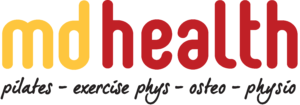The next step in the staff development system and implementing change within our organization is teaching the senior staff how to work on the individual staff development of their direct report staff members.
We have previously worked on understanding the “Readiness to change” framework in understanding what an individual staff member needs to work to change. Then we looked at Tristan White’s Character framework (See below) in setting specific elements that staff members need to work on to develop in the job and career.
These are the steps we took to make it happen:
I practiced it myself with my direct report staff members
If I was going to teach the framework to senior managers, I had to get used to it myself first. I set up a nervous and slightly anxious meeting with one senior staff member to have my first go of practicing the framework.
In reality, despite feeling anxious about the process, I have a good working relationship with the senior managers, so even if the first attempt was “terrible”, only my internal ego would be a bit bruised but the learning would be invaluable.
In the first interview, we quite quickly realized that we were going to get to spend a majority of the interview on the first part, setting their 3 year goal. Although this senior manager had a significant position of responsibility, they really didn’t know what they wanted in their life in the next 3 years and what they wanted from their career. We had already noted that there were growing frustrations in their role with “small things” happening at work and this process really brought out the why.
As they did not have a big picture of what they wanted from their life/career, the first task was to explore this and set the direction. Once this was development, it meant the next conversation was a lot easier.
Their aim was to enjoy their current position, but to spend some of the following year studying overseas. As I had not directly asked this question before, I did not know this is what they wanted so we started planning for this goal so that it can happen.
The outcome was a much calmer and happier senior manager, enjoying their work whilst moving their life in their desired direction
Start by practicing the Character staff development process on a staff member you have a good working relationship with. This way, your risk is low and you’ll get good, honest feedback to improve
Get your staff members to do it together with your help
During our branch management meeting, I ask one of the branch managers to “have a go” interviewing me. The other senior staff members watched and got to see the process in action.
Again, although she was nervous and anxious with the process, she gave it a go. We explored the 3 year and 3 month goals, but realized the most important aspect I work on is my preference in leadership style and where I needed help. Although I was quite comfortable with leading and organizing, I needed help with planning.
We also realized that there are many staff in our organization who are great planners and their skills and support are what I really needed to help improve my leadership of the organization
The outcome was two fold, first the senior manager had a chance to practice the process in a relatively risk-free environment and I got to learn more about my own development needs that I implemented to improve my leadership
Do it together. Hold the staff member’s hand through the process so they get the practice in to learn the skill before they implement it themselves with their direct report staff members
Their turn to do it
Finally, it’s their turn, with a bit less of a parachute.
Our senior manager implemented the process with one of our junior, developing staff members. They reported to me that after the interview, it was very clear that their staff member had good medium and short term goals, knew their leadership styles and what they needed to work on. However, their next areas of developmental growth was to build a group of industry peers they could converse and discuss ideas with outside of our organization.
As a result, they developed a plan of contacting his previous university supervisors (who he still had good relationships with) and regularly catch-up to discuss ideas. The result is that he was able to broaden his perspective and not be limited by the “walls” of our organization.
Let the staff members give it a go and discuss the results with you. The process doesn’t have to be perfect, they just need to start and the practice will make it better
The I, we, you approach is a great way of slowly holding a staff member’s hand through a new learning process as they acquire a new, unfamiliar skill
If you would like to read more articles on business and leadership, visit:
https://mdhealth.com.au/articles/health-business-articles/
| Character – Development – Embracing the leadership lifestyle | |
| Discovering your personal North star | Discovering your personal core values |
| Documenting your personal career goals | |
| What are you working towards in 3 years time | |
| What are you working towards in the next 3 months | |
| Understanding your default leadership approach (And which ones are your blind spots) | |
| Planning | |
| Leading and communicating | |
| Organiser (Writing systems and policies) | |
| Checker – Making sure things are being done the way they are supposed to be done | |
| Getting better feedback on how you lead: | |
| Learning to ask and get better feedback on your leadership style | |
| Preparing for the long game of leadership (The building blocks of grit and resilience) | |
| Knowing the areas you may have challenges in in the future: • Eg self confidence or Self worth |
|
| Mastering the leadership essentials: | Creating strong personal and professional connections: (Regular rhythm of 1-1 meeting and relationships) |
| With your team | |
| With your suppliers | |
| With your clients | |
| Building team confidence and competence | |
| We have to show and teach (Not yell and tell) to pass on a skill | |
| I, we, you approach | |
| Giving better feedback (Performance): | |
| Effectively re-directing team member to improve performance | |
| The use of I statements: (I noticed…., I experienced…, (Instead of you (are late/wrong/made a mistake etc)) | |
| Couching in the moment (Development): | |
| Questions to get the right information to empower people to do a better job | |
| Being assertive and holding others to account (Empathy/accountability continuum) | |
| Leading effective team meetings | |
| Engaging your team in regular meetings with a regular rhythm | |
| Every person should be able to contribute to a team meeting in a useful way | |
| Keeping it together: | Building a support team of mentors to support and guide you |
| Personal advice networks of people who can be there for you. Can be specific functions, such as: HR, Finance, Marketing, Someone who is a few steps down the road on leadership journey | |
| Commitment to a regular reflection and refinement with peers | |
| Once a month: Stopping and reflecting what was the worst and best part of your work life and personal life | |
| Prioritizing a strong body to support a strong mind | |
| To support your mental toughness |
Join the discussion and have your say?
- Comment below!
- Call us on (03) 9857 0644 or (07) 3505 1494 (Paddington)
- Email us at admin@mdhealth.com.au
- Check out our other Health Business blog posts here
Our clinical staff would be happy to have chat if you have any questions.



